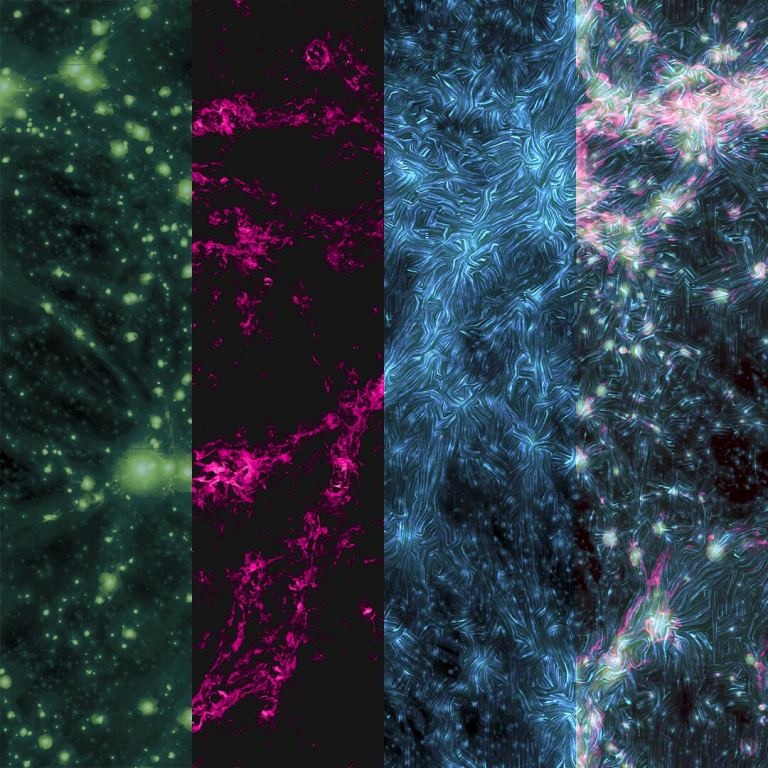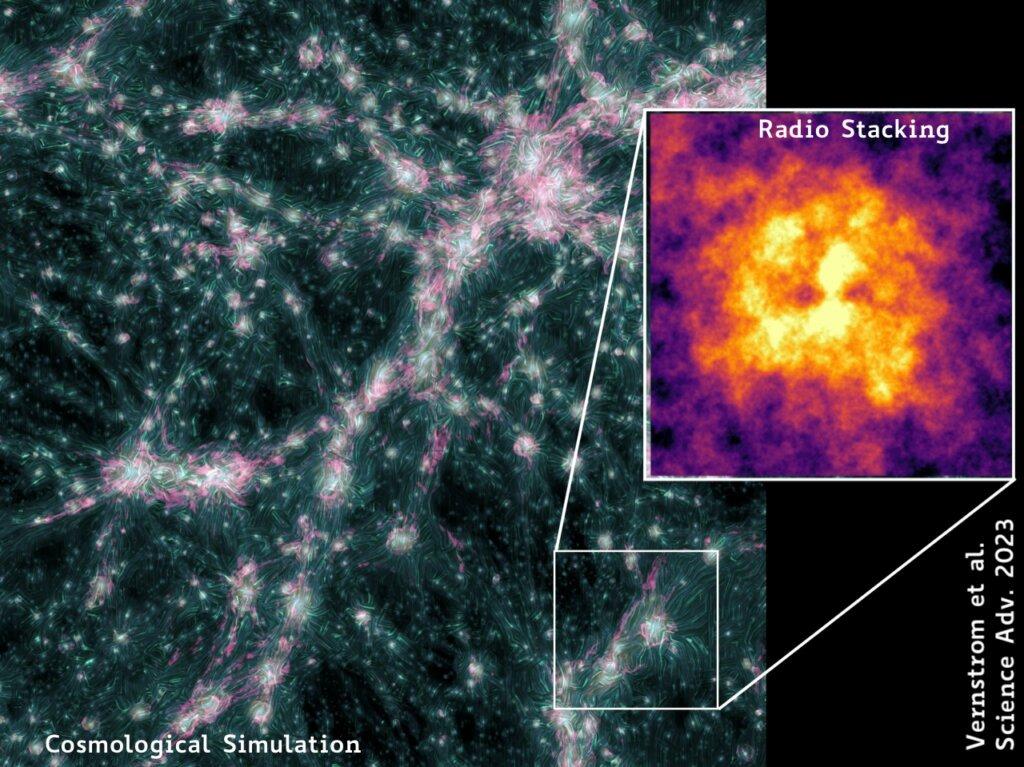Magnetic fields permeate the Universe. One of the most common sources of magnetic fields on a large scale are collisions within galactic and interstellar plasma. This is one of the main sources of magnetic fields on the scale of galaxies. But magnetic fields can exist on an even larger scale.

On the largest scale of the cosmos, matter is distributed in a structure known as the cosmic web or cosmic threads. These are large superclusters of galaxies separated by barren voids. Thin threads of intergalactic material stretch between these superclusters, creating a cosmic network of matter. Most of this web is ionized, so it must create huge but weak intergalactic magnetic fields. At least in theory. Astronomers have not been able to observe these intergalactic magnetic fields before. However, a new study has discovered them for the first time.
We cannot directly detect magnetic fields that are billions of light-years away. But we observe them because of their influence on charged particles. When electrons and other particles spiral along magnetic field lines, they emit radio emission. By displaying this radio signal, astronomers can map galactic magnetic fields. But the threads of the cosmic web are so scattered that the radio light they emit is very weak to be easily detected. And because neighboring galaxies create even stronger radio signals that can jam the radio light of magnetic fields.
Invisible became visible
To deal with this problem, the team focused on polarized radio light. These radio emissions have a certain directivity, so the team of researchers can more easily extract this signal from the background of space radio.

Scientists used data from radio maps of the whole sky, such as Global Magneto-Ionic Medium Survey, Planck Legacy Archive, Owens Valley Long Wavelength Array и Murchison Widefield Array. By compiling this data and comparing it with maps of the galactic threads, the team confirmed the polarized radio signal emitted by the web.
This result is not only the first detection of the magnetic fields of the cosmic web, it is also a convincing proof of the existence of shock waves of contact of intragalactic threads. These shock waves have been observed in computer simulations of cosmic structures, but this is the first evidence supporting the idea that these simulation characteristics have proven to be accurate.
Earlier we reported on how astronomers found the farthest galaxy in the Universe.
According to UniverseToday
Follow us on Twitter to get the most interesting space news in time
https://twitter.com/ust_magazine

